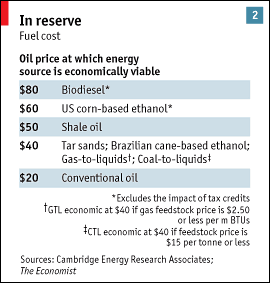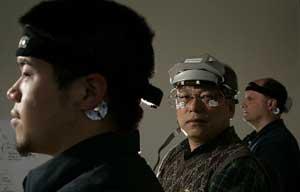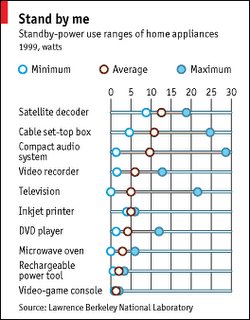Economic statistics are important because they guide our economy and measure how we are doing. But, if they do not accurately reflect what is going on then they lose their value. Most economic indicators were designed for the industrial economy and don't accurately reflect the digital economy. In this post, I take a look at how the digital economy is different from the industrial economy and how the current measurements of real GDP and productivity are underreporting the gains of the digital economy.
GDP as a measure of all the goods and services produced. As it goes up, we have more stuff and are better off. To deal with inflation, economists measure real GDP (as opposed to nominal GDP) which takes out the impact of inflation. Real GDP also reflects any quality improvements in the goods and services that are being sold. Converting nominal GDP to real GDP is done using the GDP deflator that is calculated by The Bureau of Economic Analysis (BEA).
When more goods are created, this increase is objective and easy to measure. When we create better goods, this is difficult and subjective to measure. If an iPod with 30GB sold for $200 last year, and now one with 60GB sells for $200 today, how much better is this product? Some analyst at the BEA has to make this subjective decision for every product and it affects the GDP deflator and therefore the real GDP value.
Productivity is important, because increasing productivity is key to improving standard of living. Every 3 months, the Bureau of Labor Statistics (BLS) measures aggregate productivity for the entire US economy. As productivity for the entire economy (or macro productivity or aggregate productivity) goes up, total goods and services increase (GDP) and the standard of living of the society goes up. The BLS uses real GDP in its calculations for productivity, which means improvements in the quality of goods and services are captured in productivity. Because real GDP has subjective decisions on how product improvements are measured, implicit in the productivity number are these decisions.
The industrial (or physical) economy deals with things like food, cars, TV's, and computers. For every additional item that needs to be produced, time and effort must go into creating it. Increasing productivity means a worker can create more cars, shirts, TV's or widgets in a given amount of time and therefore the economy as a whole could create more stuff increasing the standard of living. With industrial goods, more produced equals more consumed. An extra TV is created, someone can have it. And that extra TV brings with it extra revenue and extra GDP. You can always have more stuff: a larger house, another TV or a new pair of shoes.
The digital economy encompasses items like software, TV shows, movies, books, magazines, newspapers, and video games. This is also referred to as digital content. It has large up front costs but is practically free to distribute as many as copies as you want. Digital goods require time to consume them, so individuals are limited in how much they can consume regardless of how much money they have. Because of these differences from the industrial economy, in the digital economy the amount produced does not equal the amount consumed. If one car is produced, one person can purchase it. If one TV show is created, there is no correlation with how many people can watch it. One person or 1 million people can watch it and there is minimal additional expense to broadcast to all the extra people. Producing more movies in a year does not necessarily mean more people will watch them or that total revenue will go up for the motion picture industry or GDP. Society is best served when the most amount of digital goods are produced, but this might not be reflected in higher total revenue. These differences lead to a need to measure productivity and real GDP differently.
In general, economic statistics have a hard time dealing with digital goods. The fact that the marginal cost equals zero blows up a lot of the models. For example, in standard market economics, the optimal price is set where marginal cost equals marginal revenue. But, if marginal cost equals 0, this means that the price should be zero. And you can't have much of an economy if the prices were all zero, could you?
With industrial goods, increasing quantity and quality of goods is reflected in higher prices and more revenue. Worker productivity can be accurately measured by dollars of goods produced an hour. And as this increases, total revenue goes up, GDP increases and society as a whole is better off. With digital goods, society as a whole is best served when content producers are productive in terms of creating more and better content per hour they work. But, because only so much content can be consumed due to time constraints, and the amount of consumption is not linked to the amount of production, this won't always be reflected in more revenue or more GDP. So, unlike in the industrial economy, society is not necessarily best served when revenue per hour is maximized with digital goods.
In industrial economics, to maximize productivity you want to maximize revenue with the minimum number of workers. Sometimes productivity in one business gets high enough that they need fewer workers. The theory goes that these laid off workers will be able to find jobs with new businesses creating new stuff. By doing this, the total number of goods for society increases, and society as a whole benefits. With digital goods this doesn't work. For example, if the TV news industry consolidated from 3 networks to one, it would be able to reach the same audience each night, and therefore make the same amount of revenue. But it would do it with 1/3 the staff, making the workers 3 times as productive in terms of revenue per employee. But this is not a good thing for viewers as they have lost choices of what news we want to watch and there is less reporting that is done. And unlike in the industrial sector where the laid off workers can create new stuff that will be consumed by someone else, if the laid off news workers go and get another news job at a brand new news channel, they will be going after the same viewers and you are right back where you started.
Because time is limited and consumers can't consume more content, the only way for them to improve their experience is to consume higher quality content. This improves standard of living, just like in the industrial economy if they were consuming higher quality (and more expensive) goods. The way this should be captured, is that when the content is of higher quality, it should be treated as more valuable and reflected in the price deflator. Real GDP should therefore reflect this increase in quality even if the price isn't higher and revenue or nominal GDP isn't higher.
One way the quality is improved is by having more choices. More choices gives you a better chance of finding something that is suited to your particular tastes. Society is therefore best served when there is a maximum amount of content choices. This will lead to more niche based content and we will have more choices of magazines, TV shows, and movies. This will lead to smaller average audiences, and dollars of revenue per worker will go down, but unlike with industrial goods, this kind of decrease in worker productivity is a good thing for society.
You can see this increase in choices with magazines that have gone from a few handful to over 6,000, cable TV that has gone from 10 to over 100 channels, and movie rental libraries that have gone from a few hundred to over 10,000 with Netflix. Sometimes the content providers are able to charge extra for the extra choice. Cable companies sell premium channels and extended basic cable for an extra amount each month. Netflix charges extra to have 8 movies out at a time rather than 3. In these cases the extra availability of content does lead to extra revenue, and is captured by GDP. But in cases where extra choice is not captured, it is still as valuable. When your selection in cable channels goes form 30 to 35 without an increase in price, you are better off and this should be reflected in real GDP just as it is when they charge more for it.
The second way to improve quality, is for consumer to have tools to help them find better content. Recommendations from Netflix, Tivo and Amazon help us to do that. You find out about books or movies or TV shows that you have never heard of, but that you would probably like based on your past consumption. Instead of watching movies, TV shows, or books that you would rate 3 stars, now with the tools you are able to find the niche material that you enjoy more so now you would rate your average experience 4 stars. Other viewers can leave feedback, so that you know more about a book or a movie before you consume it. Yahoo Movies aggregates the 10 top movie reviewers in the US to give you a much more accurate view of a movie than any one reviewer could give you. It also lets you know how much the average viewer liked it as well. DVRs record TV content, so instead of being limited by what is currently being broadcast when you want to watch TV, you now have access to everything that has been broadcast in the last 24 hours.
This has nothing to do with what the producers did, but rather being smarter about you choose to consume it. In the digital age, the quality of consumption can be increased as much by consumers using tools as it can be by producers creating more and better content. This improvement should be captured by real GDP. Because productivity is calculated off of real GDP, this means in the digital age, productivity increases are determined as much by consumers as they are by producers.
For the economic statistics to accurately reflect the digital economy, the BEA needs to capture the increase in quality due to more selection and tools to find the best stuff. By capturing this in the GDP deflator, real GDP will reflect this increase in standard of living. Because the BLS uses real GDP for calculating productivity, the increase will be show up in the productivity number for the US economy in aggregate. In the digital economy, maximizing dollars produced per hour on the micro level does not lead to the ideal amount for society. Instead, to maximize aggregate productivity, you need to maximize the quality and quantity of output by digital content producers and the tools for finding the best content for consumers.
Read More...
Summary only...















